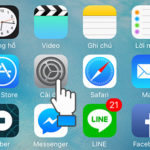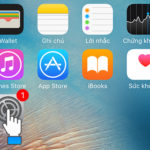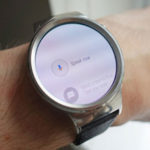Unlocking the Power of the Control Center: A Comprehensive Guide for iPhone Users
The Control Center remains an indispensable part of the iPhone experience since its inception in iOS 7 back in 2013. It houses toggles for frequently used actions like Wi-Fi, Bluetooth, music controls, brightness, volume, and more. But it’s not limited to just those as you can add, remove, and rearrange options in the Control Center as per your needs.
However, the steps to open the Control Center on iOS vary depending on your iPhone model. So, in this article, we’ll guide you through how to access the Control Center on an iPhone, use it, customize it, and make the most of its convenient features.
How to Access the Control Center on iPhone
Depending on the iPhone model you’re using, there are different gestures to invoke the Control Center on your iPhone. Here’s a breakdown:
1. On iPhones with Face ID
Accessing the Control Center on iPhones equipped with Face ID security (iPhone X and later) is quite straightforward.
Step 1: To bring up the Control Center, swipe down from the top-right corner of your iPhone screen.
Step 2: To close the iPhone Control Center, simply swipe up from the bottom of the screen or tap anywhere on the screen outside the Control Center icons.
2. On iPhones with a Home Button
If you own iPhone 8 or earlier models featuring a physical Home button (iPhone SE, iPhone 8, and older), here’s how to access the Control Center on your iPhone:
Step 1: Swipe up from the bottom edge of the screen to bring up the Control Center on your iPhone.
Step 2: To close the Control Center, tap the down arrow at the top of the iPhone screen or press the Home button.
Exploring the Features of iPhone Control Center
Now that you know how to access the Control Center on your iPhone, let’s explore how to use this feature. Using the iOS Control Center is quite intuitive. You can tap, slide, and even press and hold the toggle buttons to reveal additional options. For instance, long-pressing the brightness slider shows you icons for Dark Mode, Night Shift, and True Tone. Similarly, long-pressing the flashlight icon allows you to change its intensity.
/fptshop.com.vn/uploads/images/tin-tuc/181694/Originals/cach-bat-trung-tam-dieu-khien-tren-iphone-3.jpg)
What’s more interesting is that the group on the top-left (housing Airplane mode, Cellular, Wi-Fi, and Bluetooth) has additional functionality. If you press and hold any of these buttons, you’ll see two more options: AirDrop and Personal Hotspot. And here’s a neat trick—touching and holding the Wi-Fi, Bluetooth, or AirDrop icons lets you choose a different Wi-Fi network, select a different Bluetooth device, or change AirDrop visibility settings, respectively.
Now, let’s discover the features you can add and use from the Control Center on your iPhone.
1. Connecting to Networks or Bluetooth Devices
Airplane mode: By enabling Airplane mode, you can restrict all wireless connections on your iPhone.
Cellular data: Turn on Cellular data to allow apps and services to connect to your carrier’s internet network instantly.
Wi-Fi: Tap and hold the Wi-Fi icon to connect to an available Wi-Fi network.
Bluetooth: Turn on Bluetooth and connect to other Bluetooth-enabled devices. Both Wi-Fi and Bluetooth when long-pressed will redirect you to the Settings app.
AirDrop: Share media files, your location, and more with nearby Apple devices.
Personal Hotspot: Lets other devices like computers and mobile phones use your own internet service.
2. Controlling Audio
Press and hold the audio player in the top-right corner of the iPhone Control Center to manage controls for music services, podcasts, and streaming. Other options in the Control Center include:
Alarm: Set an alarm or modify your Sleep Focus schedule.
Calculator: Open the calculator with a single tap. Additionally, you can access the scientific calculator by rotating your iPhone.
Camera: Use your device’s built-in camera to scan QR codes.
Lock Orientation: You can enable this feature to prevent screen rotation while making FaceTime calls or using any other app/service.
Brightness: To change the brightness of your display, press and hold the brightness icon and drag the slider up or down.
Volume: To change the volume of any playing audio, simply tap the volume control and drag the volume slider up or down.
Focus: This option includes different modes, and when activated, your iPhone will switch to a work-oriented mode, limiting notifications, messages, and calls that might hinder your productivity.
Camera: Tap and hold the camera from the Control Center to take selfies or portraits and record videos.
Flashlight: You can turn your iPhone’s camera LED flash into a handy flashlight. Long-pressing the flashlight icon allows you to change the brightness of the flashlight.
Dark Mode: Use your phone in Dark Mode to reduce eye strain and have an optimal viewing experience in low-light conditions.
Guided Access: If someone else is using your iPhone, turn on Guided Access. It will confine your iPhone to a specific app and manage accessible features.
Low Power Mode: When your iPhone’s battery is low or you don’t have access to a power outlet, switch to Low Power Mode.
Magnifier: You can use your iPhone as a magnifier to zoom in on nearby objects.
Notes: Jot down quick notes directly from the Control Center while using an app or any screen.
Screen Mirroring: Wirelessly stream audio, video, and images to your Apple TV and other AirPlay-compatible devices.
Screen Recording: Press and hold the Screen Recording button to start recording your iPhone screen or broadcasting on Instagram/Messenger. You can enable or disable the microphone if needed.
Sound Recognition: Turn on Sound Recognition to help you detect specific sounds like alarms, sirens, etc., and alert you.
Hearing: If you use hearing aids, quickly connect or disconnect them or use Live Listen on your AirPods from the Control Center on your iPhone.
Wallet: Adding the Wallet control provides easy access to cards for Apple Pay or other services like movie tickets, boarding passes, etc.
3. Hidden Features in iPhone Control Center
Most general iPhone users might not be aware of the hidden features in the iPhone Control Center. Here are some hidden features that you can add to the Control Center when needed. Let’s check them out:
Accessibility Shortcuts: It enables quick activation of accessibility features like AssistiveTouch, Switch Control, Zoom, etc.
Announce Notifications: If you enable this feature, Siri will read out notifications on your AirPods or other compatible Beats headphones.
Apple TV Remote: You can use your iPhone to control your Apple TV.
Home: Manage your favorite home appliances without opening the Home app.
/fptshop.com.vn/uploads/images/tin-tuc/181694/Originals/cach-bat-trung-tam-dieu-khien-tren-iphone-7.jpg)
Night Shift: By pressing and holding the screen brightness adjustment bar, you can turn on Night Shift to shift your iPhone’s display to warmer colors at night.
Noise Control: While using your AirPods, the Noise Control feature will detect outside noise and block it out.
Notes: In addition to Quick Notes, there’s another Notes control to quickly jot down thoughts, create lists, draw sketches, etc.
Music Recognition: You can turn on Music Recognition directly from the Control Center to discover the name of





































